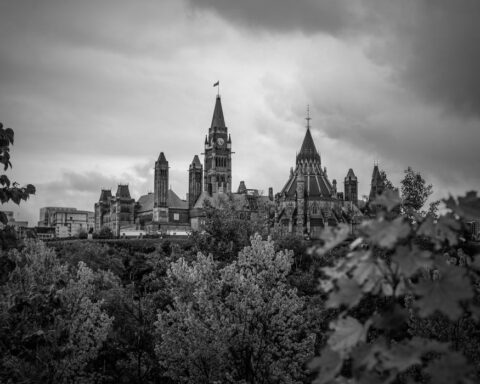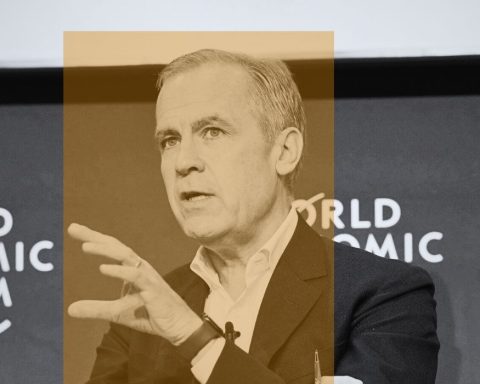Life is full of mysteries, and the federal budget for 2023 is one of them.
Contrary to what people might think, the federal budget tells us precious little about what the government is actually spending money on this year when it comes to clean economy incentives, or anything else for that matter.
After last year’s budget, I submitted a media request asking the Department of Finance and the Ministry of Environment and Climate Change how much they were set to spend to address the climate crisis in 2022. The official response was a shoulder shrug. To find out what is actually going on, you have to sleuth through public accounts, which come out every December and tell you what was spent the previous year.
On Tuesday, Minister of Finance Chrystia Freeland, sporting new black pumps (the finance minister traditionally wears new shoes on budget day), unveiled the “Made in Canada” 2023 budget. There were a lot of big numbers in it, tallying up $112 billion of past announcements of climate commitments since 2015, as well as a raft of announced investments in Canada’s cleantech and auto sectors.
News headlines trumpeted that the federal budget was setting aside more than $80 billion for clean technology tax credits over the next 12 years. That’s a big number. Adjusting for the size of our economy, it is twice as ambitious as the US$369 billion that will be spent over 10 years as part of the U.S. Inflation Reduction Act. But these long-term projections should be taken with a grain of salt, asa lot can happen over a decade, including a change in government to one that might have different priorities.
I prefer to look at what the government is going to do this year.
On new spending, the answer is not much. The table below shows new budget funding to address the climate crisis and opportunity imperatives this fiscal year. They add up to $386 million, 0.02% of Canada’s GDP. We were happy to see the renewal of the smart grid program ($100 million over the next five years), though it was a little more modest than what Corporate Knights has been encouraging.
| Federal budget 2023 | 2023/24 | Total 2023–2028 |
|---|---|---|
| Clean electricity tax credits and supports | $8* | $7,361 |
| Other clean economy tax credits | $173 | $11,099 |
| Investing in VIA Rail trains and services | $117 | $210 |
| Investing in Canada’s forest economy | $85 | $368 |
| Lithium from brines (flow-through and tax credits) | $3 | $14 |
| Total | $386 | $19,052 |
On the five-year horizon, there could be an additional $19 billion of funding – mostly in tax credits – designed to boost clean electricity, hydrogen and cleantech.
Encouragingly, the budget did include some direction to redeploy significant existing buckets of money by increasing the long-term capital allocations of the Canada Infrastructure Bank to clean power and green infrastructure projects to a total of $20 billion ($10 billion in each) and announcing that the team at PSP Investments (one of Canada’s largest pension investment managers) will take charge of deploying the previously announced $15-billion Canada Growth Fund.
How to make sense of these amounts?
In her budget speech, Freeland said we are in the midst of “the most significant economic transformation since the Industrial Revolution,” and she isn’t wrong.
The budget spelled out the magnitude of investment required. “The scale of investments that Canada requires to reach net-zero by 2050 is significant, with estimates ranging from $60 billion to $140 billion per year on average,” it said. (Corporate Knights pegs it at $126 billion per year.)
While there are no good breakdowns of the climate investment gap, the federal government’s Sustainable Finance Action Council estimates that it is large – as high as $115 billion per year.
So, $386 million of new funding to close that gap in 2023 is like a drop in the bucket – representing 0.3% of the climate investment gap. To be fair, the new funding is designed to crowd in private sector investment, but even if you multiply it by 10, it’s not significant enough for this year.
The carbon tax won’t save us
The budget points out that “Canada has taken a market-driven approach to emissions reduction” and says that the country’s carbon-pricing system “provides a clear economic signal to businesses and allows them the flexibility to find the most cost-effective way to lower their emissions.”
But some of Canada’s biggest polluters, such as Suncor, are paying only a fraction of the carbon tax. I calculated the company only paid 5% of the tax in 2020, based on data from its 2022 climate report, and a CBC News analysis found that Irving Oil and a group of other big polluters in New Brunswick paid less than 2% of the carbon tax in 2019. These kinds of loopholes may help explain why the federal government quietly updated its own projections for reducing greenhouse gas emissions in January. Last year, the government rolled out its Emissions Reduction Plan to big fanfare, stating that the country would cut its emissions by 40% (of 2005 levels) by 2030. The government’s updated projections have since kicked that can down the road five years.
Canada is going to need a lot more than a loosely applied carbon tax if it’s going to bring down its emissions meaningfully. Existing rebates, new tax credits and redeployed investment buckets all help to send a message and also provide confidence for the private sector on our direction of travel.
But if we want to meet our goals and lead the transition to a clean economy, we need to ramp up investment this year, not in 2030.







